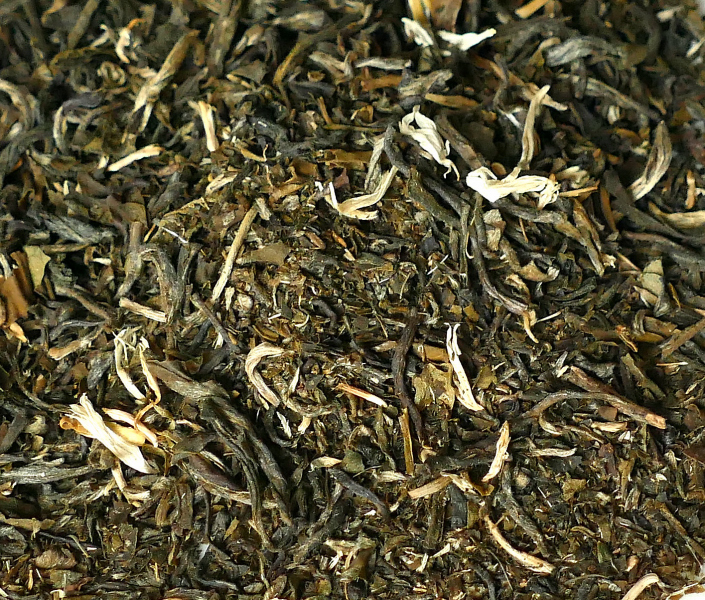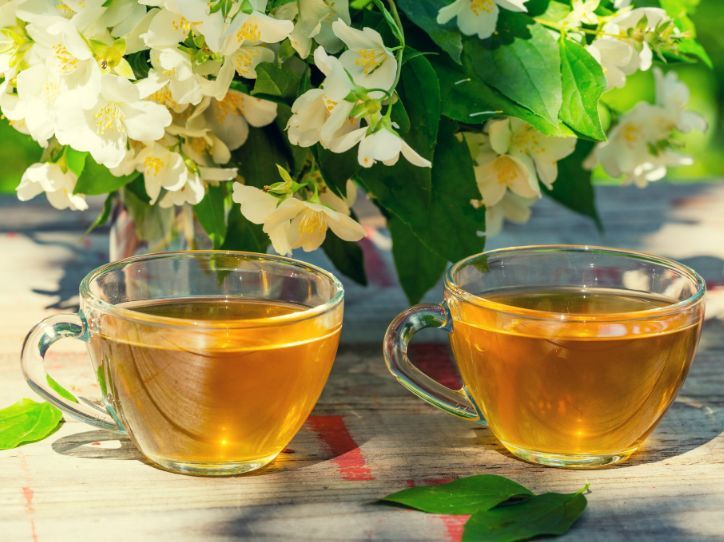Tea (Camellia sinensis) is a plant widely used for ethnopharmacological use due mainly to the presence of polyphenols such as catechin and its derivatives, anthocyanins, flavonoids.
The color varieties are mainly due to differences in treatment, climate, but basically the variations between plants are few.
It is grown in:
- India
- Cina
- Sri Lanka
- Kenya
- Indonesia
The most common are:
The characteristic scent of tea seems to be influenced by the jasmonic acid present in the leaves (1).
When tea is taken to prevent or combat disease, attention should be paid to doses and, as with almost all herbs, ingestion of large amounts may be toxic. When the tea is taken for therapeutic purposes for cardiovascular diseases, diabetes and more, the best results are obtained in people who consume 3-4 cups of tea (600-900 mg of catechins) per day (2).
This study believes that green tea and red tea have special antioxidant properties with neuroprotective potential and can prevent memory deficits. However, only green tea has better neuroprotection (3).
Black tea contains important flavonoids which, according to this in vitro study, exerting an inhibitory effect on colon cancer cells could be better studied to become possible medicines (4).
Oral administration of green tea extract exercised cardioprotective activity and prevented doxorubicin induced cardiotoxicity by accelerating heart antioxidant defense mechanisms and down regulating the lipid peroxidation levels to the normal levels (5).
A study from 2004 to 2014 on elderly people found that frequent consumption of tea can reduce the risk of depressive symptoms (6).
Tea studies
References____________________________________
(1) Influence of Chloroplast Defects on Formation of Jasmonic Acid and Characteristic Aroma Compounds in Tea (Camellia sinensis) Leaves Exposed to Postharvest Stresses. Li J, Zeng L, Liao Y, Gu D, Tang J, Yang Z. Int J Mol Sci. 2019 Feb 27;20(5). pii: E1044. doi: 10.3390/ijms20051044.
(2) Studies on the Prevention of Cancer and Cardiometabolic Diseases by Tea: Issues on Mechanisms, Effective Doses, and Toxicities. Yang CS, Zhang J. J Agric Food Chem. 2019 May 15;67(19):5446-5456. doi: 10.1021/acs.jafc.8b05242.
(3) Supplementation with different teas from Camellia sinensis prevents memory deficits and hippocampus oxidative stress in ischemia-reperfusion. Martins A, Schimidt HL, Garcia A, Colletta Altermann CD, Santos FW, Carpes FP, da Silva WC, Mello-Carpes PB. Neurochem Int. 2017 Sep;108:287-295. doi: 10.1016/j.neuint.2017.04.019.
(4) Inhibitory effect of black tea (Camellia sinensis) theaflavins and thearubigins against HCT 116 colon cancer cells and HT 460 lung cancer cells. Imran A, Butt MS, Xiao H, Imran M, Rauf A, Mubarak MS, Ramadan MF. J Food Biochem. 2019 May;43(5):e12822. doi: 10.1111/jfbc.12822.
(5) Cardioprotective effect of green tea extract on doxorubicin-induced cardiotoxicity in rats. Khan G, Haque SE, Anwer T, Ahsan MN, Safhi MM, Alam MF. Acta Pol Pharm. 2014 Sep-Oct;71(5):861-8.
(6) Association between tea consumption and depressive symptom among Chinese older adults. Shen K, Zhang B, Feng Q. BMC Geriatr. 2019 Sep 4;19(1):246. doi: 10.1186/s12877-019-1259-z.
![]() Teas
Teas 


